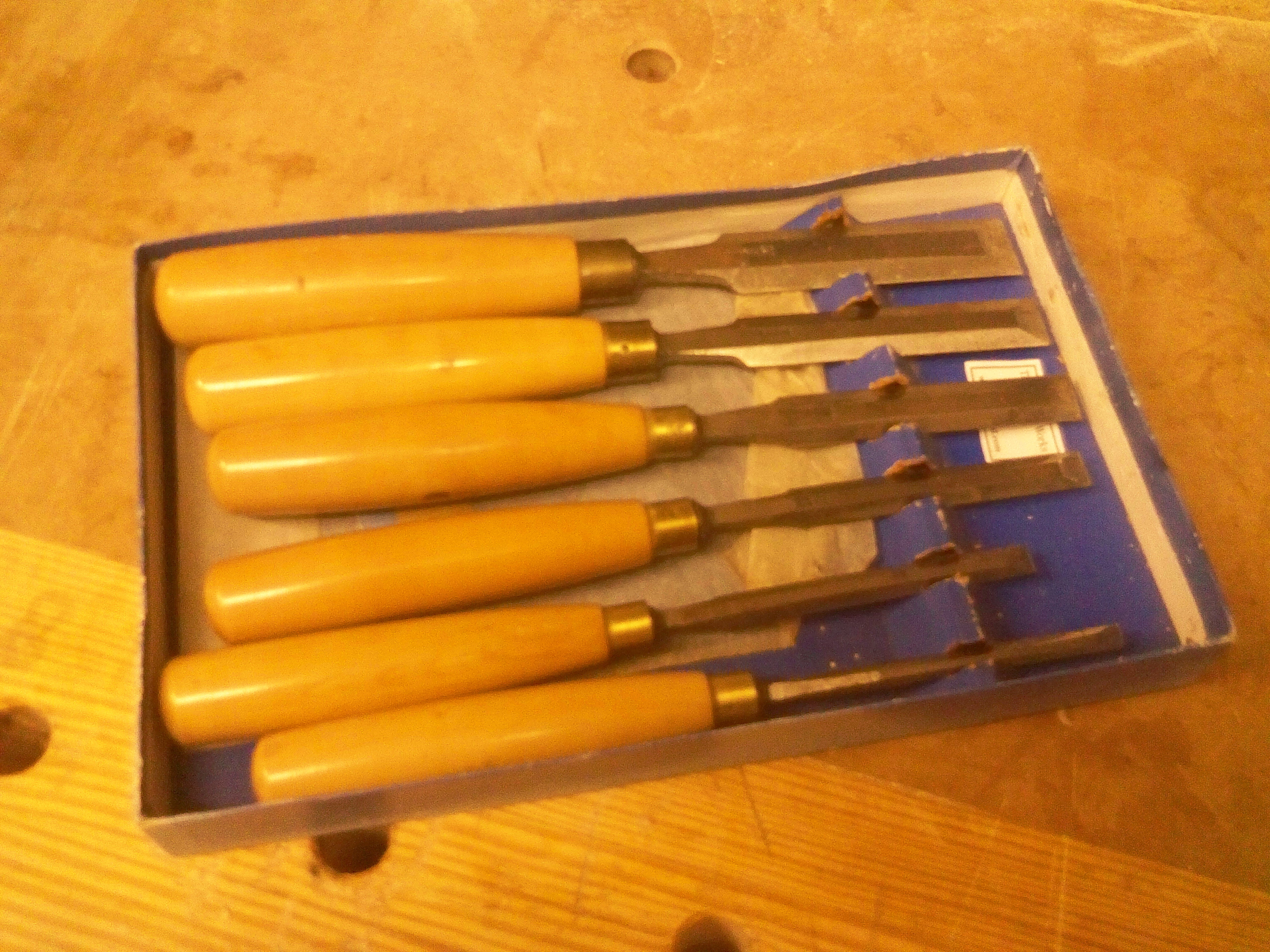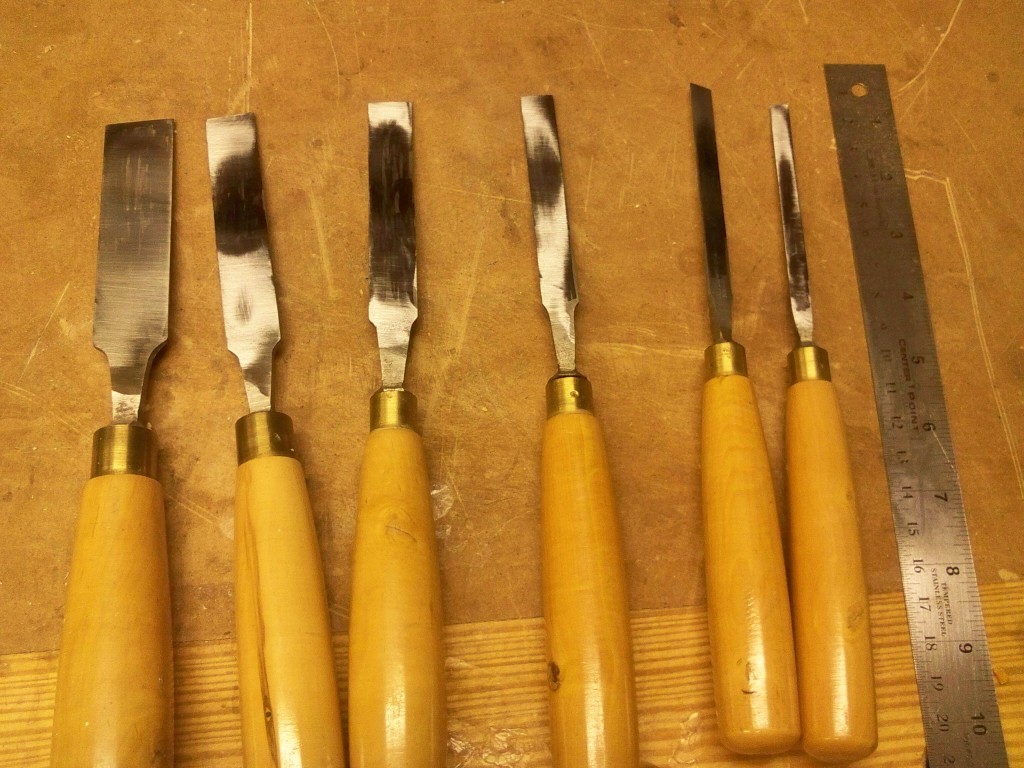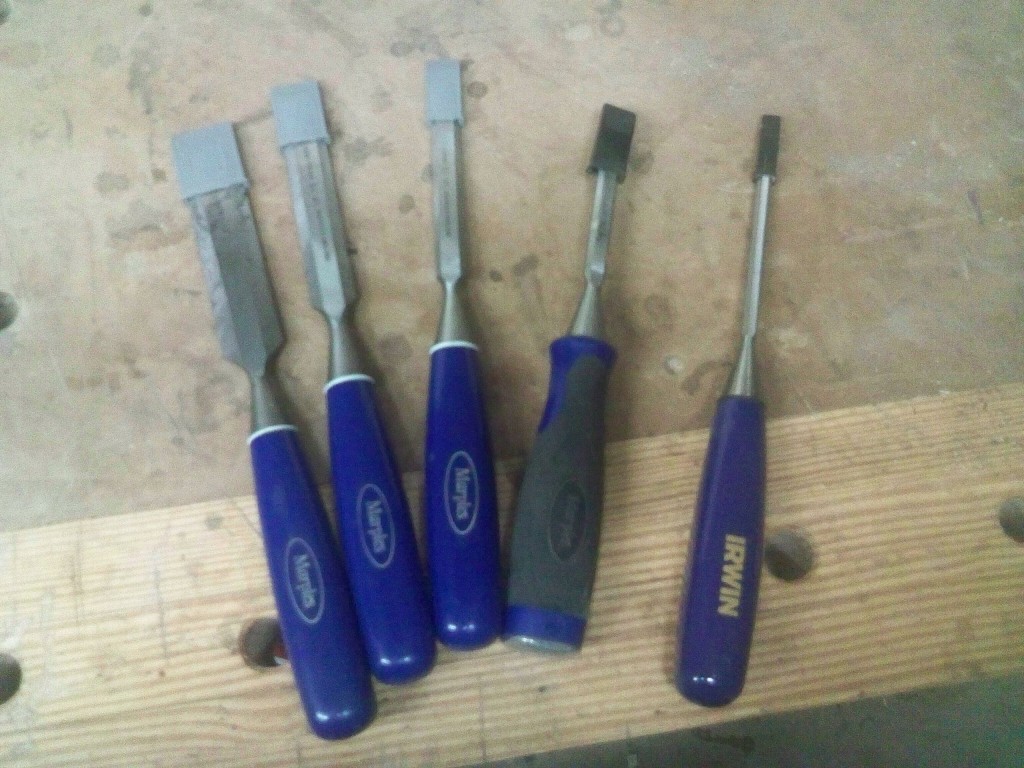Can it be? Just a few weeks ago, flush from my return from Woodworking in America, I proclaimed my love for a new set of old English chisels…
They were beautiful… made in the 1950s… with curvaceous boxwood handles and legendary antique steel. These were going to be the Mack Daddy… the be all and end all of my hand tool collection. I envisioned myself in chisel Valhalla, able to slay my hand tool working demons.

It was easy to fall in love with them. They were on the table, still in their original box. My hand was drawn to them. I imagined the former owners working with them, creating perfectly pared dovetails on an heirloom project.
I was grinning from ear to ear flying back from Cincinnati, trophies safely stashed in my check on bag. I could almost imagine the TSA folks checking through my bag, stopping when they located my beautiful set of chisels to admire and fight off their desire to covet them for themselves.
The next day, after that pesky work thing was out of the way, I raced back to the shop with visions of freshly-honed chisel bevels dancing in my head. As soon as I could get changed into some dirty work clothes, I dashed off to the shop to retrieve my diamond stones and strop to begin the sharpening process.
Of course, I had to start with the backs. Can’t really sharpen chisels without ensuring the backs are nice and flat, right?
Well, that’s when I discovered a heartbreaking surprise. These chisels were – how shall I put it – not flat. Not by a long sight. They were plumb out of whack. I colored the back of the blades with a permanent marker and ground some, then checked my progress. My fears were confirmed.
Now, I can understand that decades ago, technology wasn’t quite what it is today. But, wow, these things were curved. I was rubbing the back against my coarse diamond stone to discover that the back of the blade only touched at the tip and right near the handle. I double – even triple checked to ensure I wasn’t trying to grind away the bolster, but no. The blade was lying as flat as I could make it…
I e-mailed Patrick Leach of Superior Tool Works to ensure I wasn’t seeing things. He and I had an exchange about the chisels and encouraged me to keep at it.
But, wow, those chisels were really out of whack.
I want to say this about Patrick and Superior Tool Works – he gets his hands one some sweet old tools, and he is a stand up guy… On his site, he writes:
Old tools have been an obsession now for some sixteen years, and this source has been selling old tools through the internet longer than anyone else. When you buy old tools from The Superior Works, you not only receive quality goods at fair prices, but you also get unlimited “road service” in their proper usage, tips for making them do stuff you might not imagine, advice on which is the correct or better tool for the job you have in mind, historical perspective of their design and use, construction advice from architecture to cabinetmaking (there isn’t just an anonymous merchant looking to part you from your money behind this screenful of text – much of this stuff is actually used here) and, of course, a 100% satisfaction guarantee.
Every word the man wrote is true. After some more work and a few more e-mails, I sent the chisels back to Patrick and received a prompt and courteous refund. The next time I go shopping for old tools, I’m checking with him first.
So, what now? Well, I have a birthday coming up, and the holiday season is right around the corner. Maybe I’ll drop a few hints to the Jolly Old Elf about finding a new set of chisels. Until then, I have decided to drop back and punt…
I broke out my set of Marples Blue Chip chisels I have been using and started honing them on the equipment I already had out. I put a sweet edge on them, so nice they can pare end grain maple. That’s sharp. I’ll just have to keep an eye on them and be sure to hone the edges when they start to drag.
Besides, there’s lots of wood out there that’s waiting to get built into projects!



That’s a downright bummer. At least you got a refund. That’s better than having them sit in a cupboard that makes you sigh with regret (at what might have been) everytime you open it.
Glad to hear Patrick treated you right. I’ve drooled over some of his old tools but haven’t bought anything. Just curious though… don’t you only need the last little bit of the back (near the cutting edge) to be flat? It’s my understanding that you are only flattening the back to get a good cutting edge.
Derek – you are right in the fact that you need that last little bit on the back of the blade to be flat. However, these babies were way outta whack… not sure I could trust them for very accurate work.
Man, that’s disappointing. Everything I’ve heard about Patrick has been really good, glad to hear it’s still true.
Thanks for posting this, now I’ll know to bring along a straight edge and check anything that I pick up used at a flea market. I would have done that with a plane, but wouldn’t have thought about it for chisels.
Are you sure those weren’t Matt Vanderlist’s old chisels that he tried to lap like his Veritas smooting plane? What a bummer Tom cause I know you were really excited about them. If you are still looking for a vintage set then at least you know what to look out for in the future. Good luck in your search.
I’m looking at these, and honestly, if there’s a bit of a hollow in the middle of the back, half an inch from the chisel tip, that’s fine. The reason you’re getting the backs flat is so that you can more easily create a plane at the tip that will intersect with the plane of the bevel, and create a sharp edge with a theoretically perfect line. Japanese chisels have these hollows ground into the backs so that creating this plane is aided by the fact that there’s less metal to remove. Charlesworth’s “ruler trick” is a workaround for lazies who (understandably) don’t want to grind away day after day to get a set of chisels or a plane blade working well. But the first three and last two look like they’re almost there. Remember, you’re flattening the back only to sharpen the edge, not for any sense of back-flattening orthodoxy. What’s much worse is if you have a convex plane or chisel blade. It’s almost impossible to get flat because it rolls around as you grind away at the back.